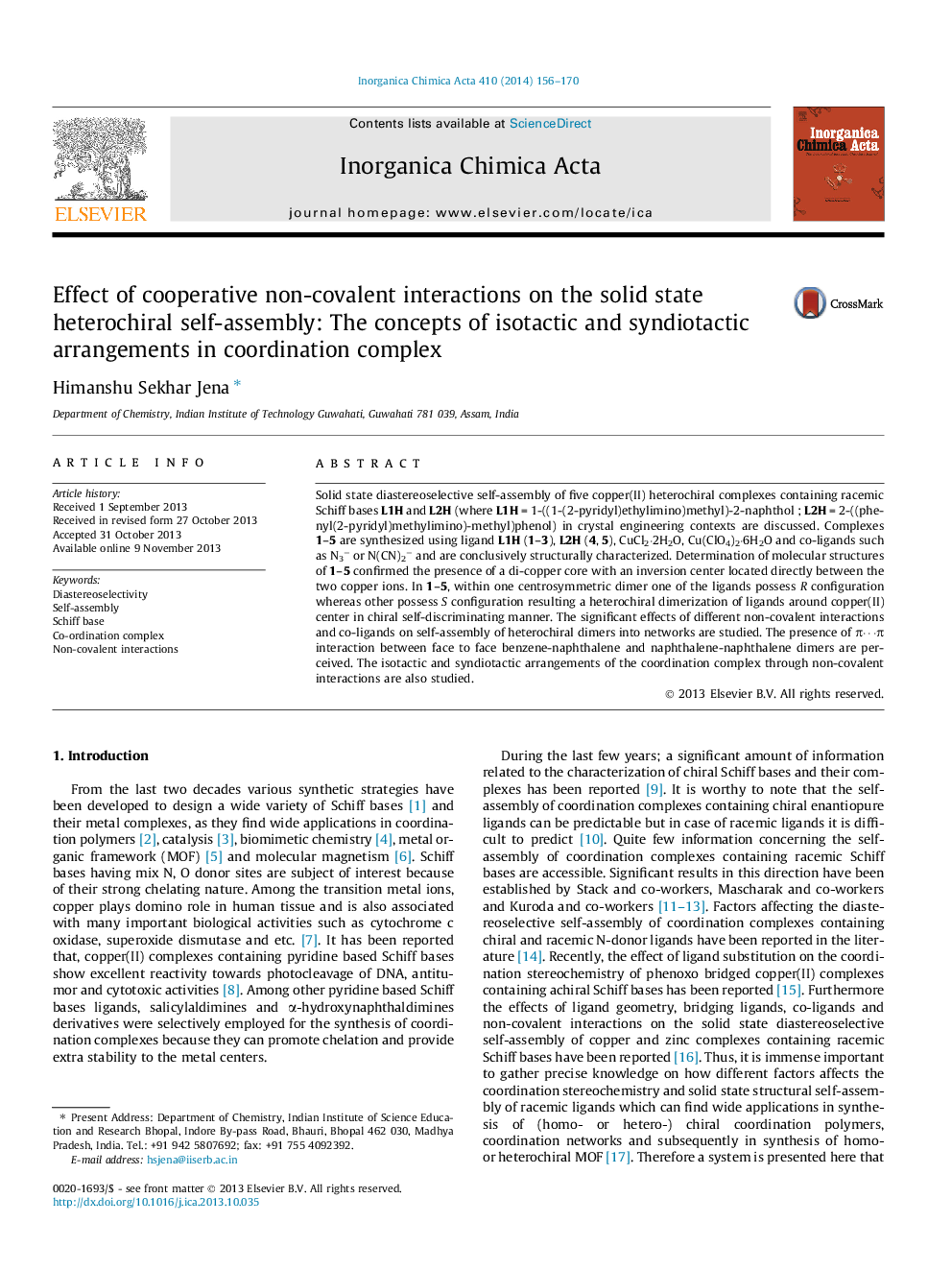| Article ID | Journal | Published Year | Pages | File Type |
|---|---|---|---|---|
| 1305721 | Inorganica Chimica Acta | 2014 | 15 Pages |
•Five heterochiral Cu(II) coordination compounds are reported.•The effects of non-covalent interactions on heterochiral self-assembly are studied.•The effect of π⋯π interaction in assembling coordination complexes is discussed.•The isotactic and syndiotactic arrangements of coordination complexes are studied.
Solid state diastereoselective self-assembly of five copper(II) heterochiral complexes containing racemic Schiff bases L1H and L2H (where L1H = 1-((1-(2-pyridyl)ethylimino)methyl)-2-naphthol ; L2H = 2-((phenyl(2-pyridyl)methylimino)-methyl)phenol) in crystal engineering contexts are discussed. Complexes 1–5 are synthesized using ligand L1H (1–3), L2H (4, 5), CuCl2·2H2O, Cu(ClO4)2·6H2O and co-ligands such as N3− or N(CN)2− and are conclusively structurally characterized. Determination of molecular structures of 1–5 confirmed the presence of a di-copper core with an inversion center located directly between the two copper ions. In 1–5, within one centrosymmetric dimer one of the ligands possess R configuration whereas other possess S configuration resulting a heterochiral dimerization of ligands around copper(II) center in chiral self-discriminating manner. The significant effects of different non-covalent interactions and co-ligands on self-assembly of heterochiral dimers into networks are studied. The presence of π⋯π interaction between face to face benzene-naphthalene and naphthalene-naphthalene dimers are perceived. The isotactic and syndiotactic arrangements of the coordination complex through non-covalent interactions are also studied.
Graphical abstractThe effects of different non-covalent interactions on solid state heterochiral self-assembly of five copper(II) complexes in a chiral self-discrimination process are studied. The presence of π⋯π interaction between face to face benzene-naphthalene and naphthalene-naphthalene dimers are perceived. The isotactic and syndiotactic arrangements of the coordination complex through non-covalent interactions are also studied.Figure optionsDownload full-size imageDownload as PowerPoint slide
